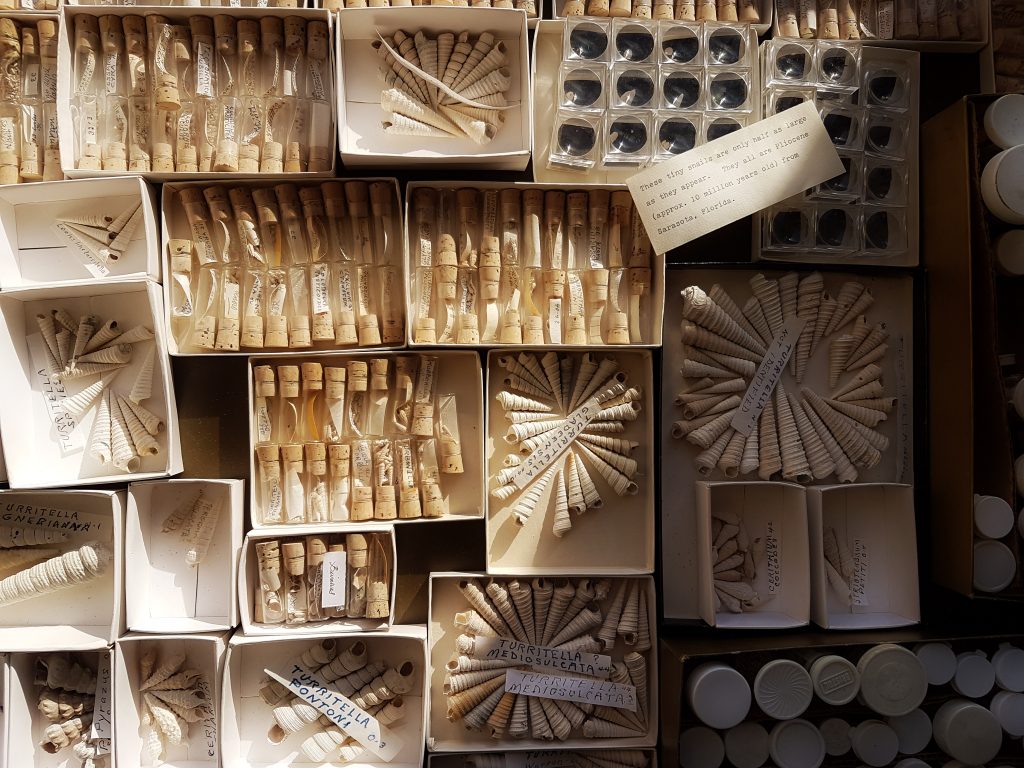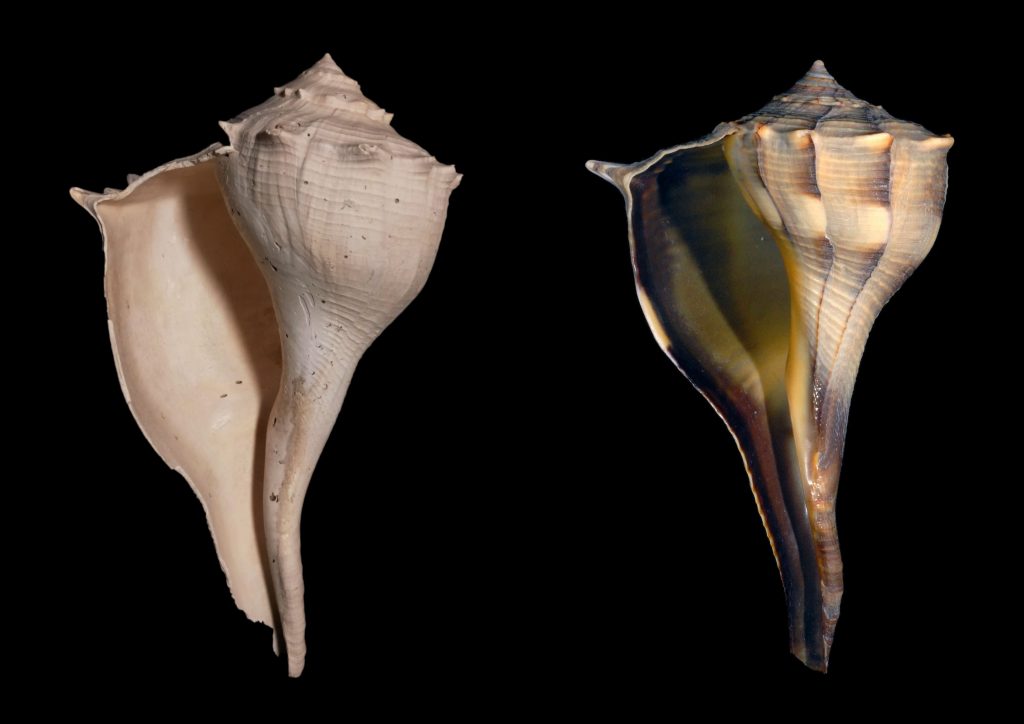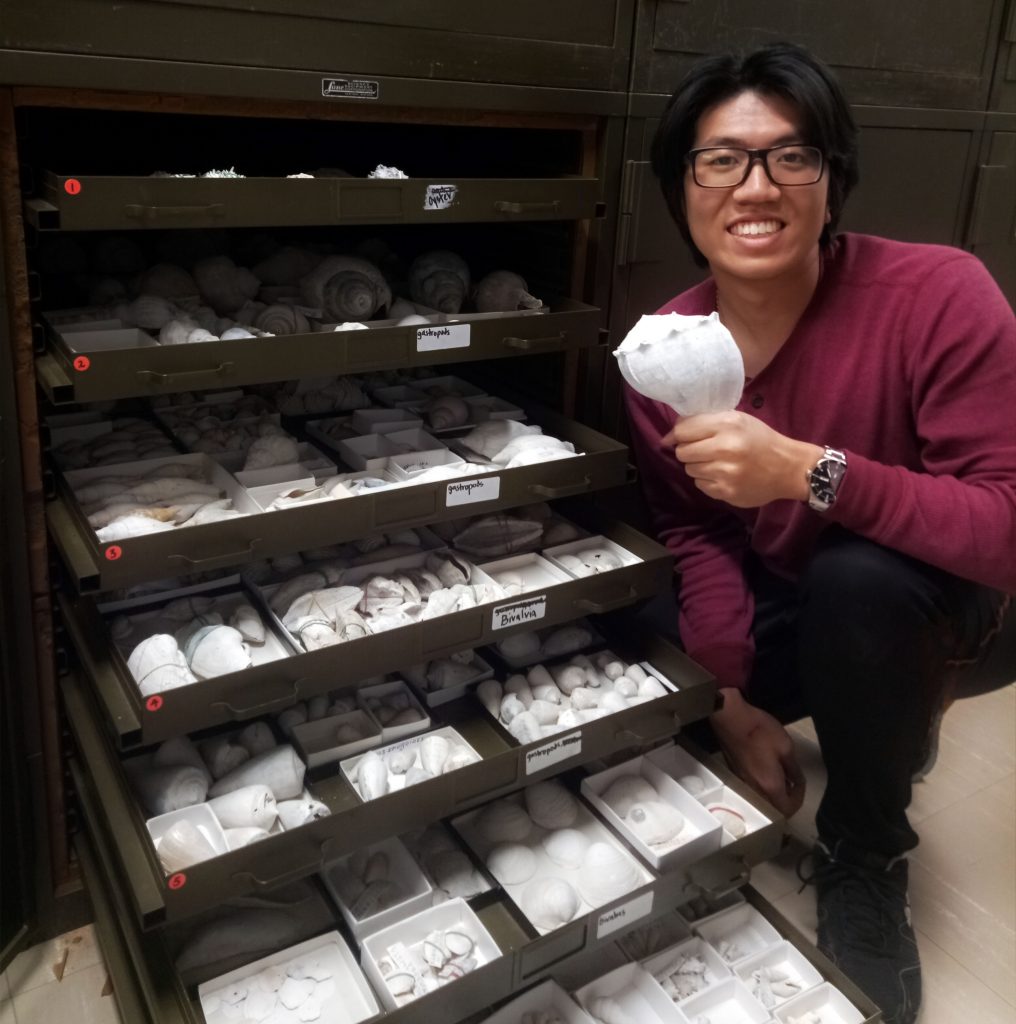
Four millions years is a blink of an eye in terms of evolutionary time.
Our collection houses 5600 specimens of fossil seashells from Sarasota County, Florida, from over 460 species. These fossils are found not along the coast of Florida as one might expect, but buried in sediments far inland. After 4 million years since their demise, their diversity and density still closely resemble that of the rich marine fauna which we see at Florida’s beautiful coasts today.
Florida boasts some of the most prolific shelling beaches, arguably in the entire world. It is home to some of the largest, most exquisite living snails (gastropods), whose shells are highly sought after by avid collectors of nature’s jewels. But among the most prized of all treasures are shells that are anomalous in their form. Seashells are categorised into two categories based on their body plans: bivalves such as clams, that have two symmetrical shells (left and right), and gastropods, such as snails, which have one shell, commonly a whorled spire, sometimes a shallow cone. You might not have noticed a rather unusual fact about the coiled snails: almost all are right-handed, i.e., their opening (aperture), where the living fleshy part of the snail emerges from its shell, is on the right when the shell placed in standard position, with the earliest-formed part (the protoconch) pointing up.

As said above, the present beaches are not the only place in Florida where one can find shells. Far in-land, in the county of Sarasota, fossil-bearing sediments from the Pliocene contain some of the most abundant and diverse mollusc faunas in the world. Four million years ago, sea levels were much higher than today. The entire county of Sarasota was covered by a shallow sea teeming with life. Temperature drops in the Pleistocene period, that followed the Pliocene, resulted in more of the ocean waters to be locked up at the poles in the polar ice sheets, and the sea levels fell as a consequence. Over a very short period of time, many shallow seas thus emerged as land, forming a major part of what we know as Florida today. Marine life died in massive numbers in the inland areas and their harder parts were preserved as fossils—windows into marine diversity of the Pliocene.

Since the Pliocene, marine faunas have adopted their modern configurations. If you walk down the shores in Florida today, you will find very similar shells as those that lived at Sarasota four million years ago. Some species may have gone extinct, but many speciations occur in continuum with the living shells we have today. A handful of species might no longer be represented, but many iconic species have changed very little in the millennia since. One enchanting specimen is the lightning whelk, Busycon contrarium Conrad. While most species of snails have a rightward spire, as described above, the lightning whelk and their allies have a sinistral morphology – a leftward spire. This is unique to six whelk species that are endemic to North America (and hence the species name contrarium – the contrary whelk).

It is not often clear why North American marine snails that evolved sinistrality became so successful in their native habitats. There is some evidence for an evolutionary advantage due to predator evasion; predators are used to attacking snails from their right. Alternatively, this novelty could simply be a random trait that raised from a chance mutation that happens to be selectively neutral—it renders neither advantage nor disadvantage to the snails that carry it. The success of the sinistral snails into the modern days debunks a blatant misconception many hold towards evolutionary theory. In the 18th century, evolution was given the connotation of ‘progress’, a highly goal-driven process in which all things become increasingly more complex and more sophisticated. A model of thought called the Great Chain of Being, having its origin in writings by ancient Greek neoplatonists, was prevalent from medieval times through the 18th century: all animals evolve in a mono-directional upward hierarchy that resembles a ladder with the ultimate goal being apotheosis into humans. Vestigial traditions of this school of thought are still embedded in our society, given its popularity in 18th century Christian interpretive traditions. Even today, the icon of the March of Progress that portrays humanity as the result of a linear progress from apes, is influencing the popular ideas about evolution as a linear advancement and improvement.

In gastropods, lefties are not common, even among shells. All of the six known extant sinistral shell species of Busycon whelks in North America diverged from one lineage – the original B. contrarium. Traits that confer significant fitness often have high levels of convergence in analogous habitats. Given that sinistrality in these North American gastropods only evolved once in the marine environment, the evolutionary advantage of this trait is not clear, and it might be negligible. In our collection, we are fortunate to feature another sinistral species- Conus adversarius. These unusual species are in high demand by collectors seeking novelties.
As these popular jewels of the natural world still line our shores today, measures are in place to protect their heritage that spanned more than 4 million years of geological time. Legislation in Florida aims to restrict the removal of living shells from their natural habitat, and to preserve these ancient lineages which originated before the dawn of humans, lest our arrogance and ignorance cause them to disappear from our shores forever.

Coauthored by Tan Yu Kai and Andy Tan
Cover photo: Apical view of a Busycon contrarium in the Joe Webb Peoples Museum Collection at Wesleyan University. Photo courtesy of Andy Tan ’21.
